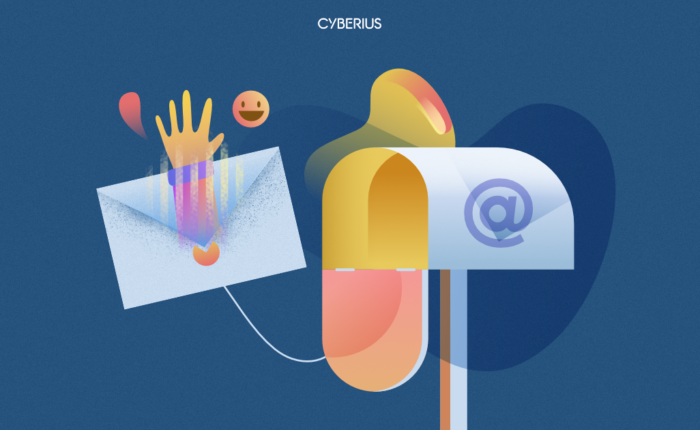No matter what your business is selling, without good marketing it can be in vain. While there are different types of marketing out there – some we have covered on our blog – today is the day that we’re giving you Email Marketing 101.

Email Marketing Best Practices
Important terms to learn:
- Cold leads. Cold leads are people that have never shown interest in any products/services of yours, and yet they are contacted to get offers related to such products/services.
- Warm leads. Contrary to their cold counterparts, warm leads are people that have shown interest in your products/services (maybe they are following your company’s social media accounts).
- Bounce rate. Bounce rate refers to the percentage of email addresses that didn’t get your message, because it was returned by their mail server.
- Open rate. The open rate is of course… how many people open your email. The higher this rate is, the higher the chances of the last two rates doing well are – and if they don’t, you’ll have more data to try to figure out why.
- Click through rate. The click through rate is the ratio of people who click on a specific link when compared to the total number of users who opened your email. Click-through rate can be a good way to measure the effectiveness of your specific email campaign.
- Conversion rate. This measures the percentage of users that you successfully “convert” into a sale, or to do what you wanted them to do. To find out this percentage, the idea is simple. You need to divide the number of people that took the desired action by the total number of recipients that you’ve sent your email to, and then multiply that by 100.
Email marketing Strategy
Conversion rates should be lower than click through rates, which on average can be a bit above 2.78%. Which is why a large database, targeted warm leads, high open and click through rates, and a bombing sales pitch can be key to a successful email campaign.
Knowing at least the basic terms above and taking them into account can help you analyze if your email marketing campaign has reached its purposes or not.
By combining this with the correct strategy, such as by implementing the right netiquette (i.e. by making sure to obtain permission to contact first from your target audience), you will benefit by avoiding some unnecessary obstacles. Such as getting your emails marked as spam – which would hinder your audience from being able to read them.

Best practices for email marketing, compiled for your benefits:
Find the best times (and days)
As how it goes in real life, email marketing has its own best times and days too. Think of the target audience as you: how would their routine go? Are you targeting a group of students?
Or will your audience consist of professionals in the technology field? Or are your primary customers remote workers? Every group has its own best times and days, and finding these out is the first appropriate step towards guaranteeing that your email marketing will be a hit.
There are actually studies and reports that show some days and times seem to be doing better than others, in general. However, again, you do need to run your own experiments first as every campaign is different. Tools such as GetResponse’s platform can help you track these statistics.
After all, no one would probably want to check emails sent at midnight, right?
Write good headers
While it is possible that you might forget about your headers – since they are usually part of the email template that you use – we suggest to always take some time to think about them.
As its location is at the top, it would be one of the things that immediately get noticed by your audience, and it can be crucial in determining whether someone would want to open your email or simply tap that spam (or delete) button.
On writing a good header, first you would need to do some research whether your jurisdictions have some sort of rules and conventions that you need to abide by. Once you are done with your research, develop headers that:
- Concise and have a bit of fun. A good example for this would be Birchbox’s header, where, aside from having the most popular options (including a link to their website’s sales area), they also give a bit of information regarding their members’ loyalty program and points balance. This way members find it easy to know where they are at, at a glance. If you’re not a member, Birchbox has a fun little pink button where you can subscribe.
- Involving of pre-header texts. This can be anything, but generally, think of catchy jargon that attracts people’s interest to your business. Think of it as a movie synopsis if you will, like what the guys at AFAR do. They deliberately leave a gray area that’s filled with a compelling pre-header text.
- Facilitating, for example, by giving interesting and relevant links to your audience’s interest. Say, for example, you run a travel agency and you are marketing to the millennials that love traveling: find out the destinations that they love, write articles regarding those places, and link them to your header, just like what Conde Nast Traveler does.
Here are a few samples of good headers that we love, for your perusal.
Write appealing copy to fit your header
So now that you have learned about good headers, it’s time to learn how to make good copy in the body of your email.
You won’t go very far if you only manage to create an interesting header without complimenting it with an equally interesting copy in the body of your email. Some factors that could be taken into account when writing an appealing email copy include:
- Choosing the right words. Word choice is crucial, because emails are usually read within a few seconds or minutes. A good word choice might involve an analogy of the real world and allow readers to feel involved.
- Knowing your audience. Build relationships with them. This can start with an easy method: have a picture uploaded as your business email’s display picture. This will help your audience to form a connection with you as you both get to know each other, building stronger relationships, and converting them into sales.
- Getting personal. Who do customers listen to? It’s not sales managers or marketers, but people they trust. When they want to try a new thing, they usually ask for recommendations from their family and friends – and this is the role that you want to play. Be a close friend whom they can trust when they need to look for advice or product recommendations.
The take: be in line with your headers and touch the right areas.
Dos and Don’ts
To further equip you with the knowledge of running a successful email marketing campaign, there are also a few dos and don’ts that could be useful:
- While you might need a period of trial and error for your business, some brands out there have found that sending an email once (or probably twice) a week leads to better results in terms of conversions, open rates, and sales figures. The gist here is to keep the number limited and not too high.
- Say things that are relevant, interesting, and valuable to your audience. This can be anything from seasonal content to promotional offers (make sure you’re transparent about the terms and conditions though) that could possibly benefit your prospective consumers, and in saying it, avoid using too much text, as 65% of people are visual learners that learn best when there is a video or picture involved.
- Avoid some basic mistakes when writing your emails. These include writing in all caps, excessive use of slang, and being deceptive.
Write Follow-Ups
Think of the follow-up as an after-sales service – regardless of if you’ve really made a sale or not: provide your prospective customers with a good follow-up email. Here are a few pointers:
- Pitch them again on your product/service, but do this by differentiating some aspects. You can write an email that focuses on other benefits that the customers can get by making a deal with your business.Maybe the reason they didn’t buy your fancy car that can go from 0 to 60 in 3 seconds is simply because they live in an area that often gets traffic jammed. So let them know that you have a comfortable city car that doesn’t spend much gas, and link them to this other car, or the same car with a different sales spin of a different feature.
- Remind them of your previous offer. Involve the fact that the email you sent previously might have gotten lost in the mailbox, or appeal to their sense of urgency (for example, you can say that your offer is time-limited, if it is).
- Give them a teaser. If you’re running an online platform that enables people to watch movies, you can give your prospective customers a free trial period. If you are selling products – whatever they may be – you can offer free samples, to be directly mailed to some lucky subscribers.
Conclusion
The bottom line here is to be creative and think of reasons why your email hasn’t gotten as much response as you would like it to. Start working from there, and you’re set to start maximizing the potential of your email marketing campaign.
If done right, email marketing can bring about great results. If you are unsure where to start, we as a digital marketing company would be more than happy to help.
Check out our website and learn more about our services, and feel free to send us a shout. We’d be more than happy to assist you – helping you on what to write and when to send your emails.
Created by Cyberius, a digital marketing company who specializes in content creation, online community management, and crowdfunding.
Get informative articles like this for your business to help grow your online community, and more. Contact us at: zaneta@cyberius.com.





Leave a Comment